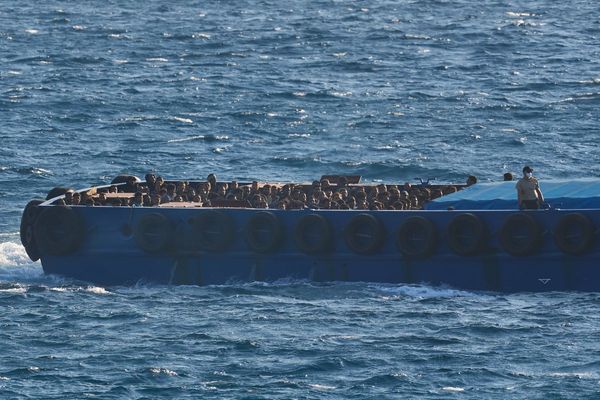The United States has successfully tested two Lockheed Martin hypersonic missiles, amid growing concerns that Russia and China have had more success developing their own hypersonic weapons.
On Wednesday, local time, the US Air Force confirmed it had successfully tested its Air-Launched Rapid Response Weapon (ARRW) booster on Tuesday off the California coast.
The ARRW test saw the booster carried aloft under the wing of a B-52H before it was launched.
In previous tests, the weapon did not detach from the plane.
"This second, successful test demonstrates ARRW's ability to reach and withstand operational hypersonic speeds, collect crucial data for use in further flight tests, and validate safe separation from the aircraft," Lockheed said in a statement.
Armament Directorate executive officer Air Force Brigadier General Heath Collins said: "We have now completed our booster test series and are ready to move forward to all-up-round testing later this year."
The "all-up-round" includes the booster and the warhead.
Hypersonic weapons travel in the upper atmosphere at more than five times the speed of sound, or about 6,200 kilometres per hour.
In a separate hypersonic weapon test, the Defence Advanced Research Projects Agency (DARPA) confirmed it had successfully performed the first test of its Operational Fires hypersonic weapon.
The test was conducted at White Sands Missile Range in New Mexico.
These successful tests show progress among the myriad US hypersonic weapons development efforts, which have, in cases, been beleaguered by failed tests, growing questions about cost and increasing concerns the US is falling behind in what has become a superpower arms race.
Operational Fires is a ground-launched system that will "rapidly and precisely engage critical, time-sensitive targets while penetrating modern enemy air defences".
DARPA has requested and received $US45 million ($66.83 million) for OpFires in fiscal year 2022.
One of Lockheed Martin's concepts for the DARPA weapon is to use an existing High Mobility Artillery Rocket System (HIMARS) launcher, similar to those sent to Ukraine, to launch the weapon.
These successful tests come after a failed June 29 test flight of a different type of hypersonic weapon, the Common Hypersonic Glide Body, at the Pacific Missile Range Facility in Hawaii.
Defence contractors hope to capitalise on the shift to hypersonic weapons, not only by building them, but also by developing new detection and defeat mechanisms.
Arms makers such as Lockheed, Northrop Grumman and Raytheon Technologies have all touted their hypersonic weapons programs to investors as the world's focus shifted to the new arms race for an emerging class of weapon.
In May, Russia's Defence Ministry said it had successfully test-fired a hypersonic Zircon cruise missile over a distance of about 1,000 km.
Reuters







